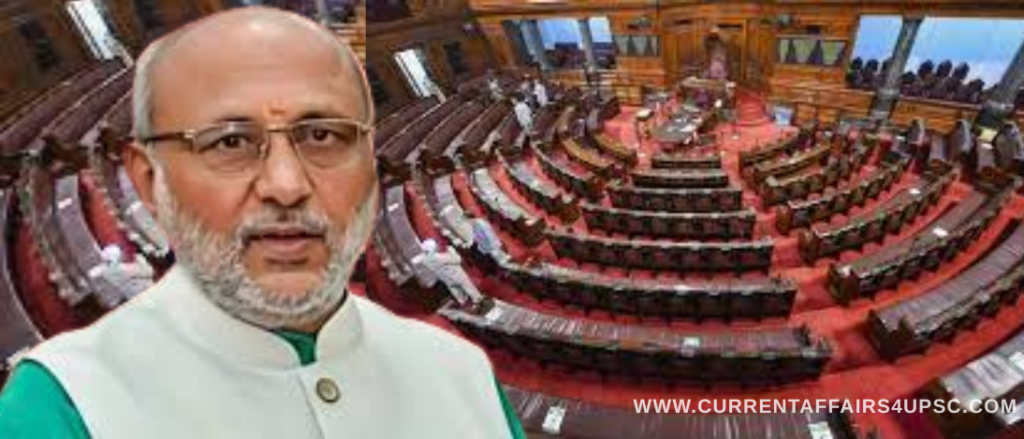
BJP-led National Democratic Alliance’s candidate CP Radhakrishnan, who has served as the Governor of several states, was declared winner of the Vice President elections. Polling for the high-stakes Vice-Presidential election commenced earlier in the day, with Prime Minister Narendra Modi casting the first vote.
It was a straight fight between the BJP-led National Democratic Alliance (NDA)’s CP Radhakrishnan and the Opposition’s Indian National Developmental Inclusive Alliance (INDIA bloc) nominee B Sudershan Reddy in the vice-presidential election, with the BJP-led alliance holding an edge based on its numerical strength in both Houses. The contest came after Jagdeep Dhankhar unexpectedly resigned as vice-president on July 21, citing the need to “prioritise health care and abide by medical advice.”
What to know about today’s VP election
- `Polling for the vice-presidential election, in which MPs from both the Lok Sabha and Rajya Sabha are entitled to vote, was held in the new Parliament building.
- The election was conducted through a secret ballot, and Members of Parliament were not bound by party whips in casting their votes.
- There are 39 MPs unaffiliated with either of the two main blocs. Among them, the YSR Congress had declared its support for Radhakrishnan, while AIMIM’s lone MP Asaduddin Owaisi has pledged his vote to Reddy.
- Union minister Kiren Rijiju had voiced confidence that the majority of the 39 MPs will back Radhakrishnan, describing him as a “nationalist and a very good person”.
- Meanwhile, two other unaligned parties, the BJD and the BRS, had said they would abstain from voting in the September 9 election. The Shiromani Akali Dal, once a BJP ally, also announced it would boycott the poll, alleging that flood-affected people in Punjab have not received assistance from the state government, the Centre or the Congress.
- The electoral college for the vice-presidential election consists of 788 members in total – 245 from the Rajya Sabha and 543 from the Lok Sabha. The 12 nominated members of the Rajya Sabha are also entitled to vote.
- At present, the strength of the electoral college stands at 781, with six vacancies in the Rajya Sabha and one in the Lok Sabha, setting the majority mark at 391. The NDA commands the support of 425 MPs, while the Opposition bloc has 324 on its side.
- The YSR Congress Party (YSRCP), which has 11 MPs and is not aligned with either camp, had announced its support for the NDA candidate. In contrast, the BRS and the BJD have chosen to stay away from the September 9 election for the country’s second-highest constitutional post.
- The NDA had nominated Maharashtra governor C P Radhakrishnan, an OBC leader from the Goundar-Kongu Vellalar community, as its candidate for the vice-presidential election. The 68-year-old BJP leader, deeply rooted in RSS ideology, is regarded within the party as a soft-spoken and non-controversial figure. He is the only BJP politician from Tamil Nadu to have secured two consecutive Lok Sabha wins, in 1998 and 1999, and has been serving as Maharashtra governor since July 31 2024.
FAQs on Election to the Office of Vice-President of IndiaWho elects the Vice-President of India ? What is the term of the office of the Vice-President? When is the election of the Office of Vice-President of India held? What is the legal framework for the election to the office of Vice President of India? What are the conditions to be fulfilled by a candidate for his nomination to be valid? Who is appointed the Returning Officer/Assistant Returning Officer for the election to the Office of Vice-President of India? Who makes such Can a Candidate submit more than one nomination paper? What would be the security deposit to be made by such candidate? How is the value of votes of members of the Electoral College calculated? Can the results of the election to the Office of Vice-President be challenged ? If so, what is the proper procedure for doing so ? |
Author: currentaffairs4upsc
UPSC


